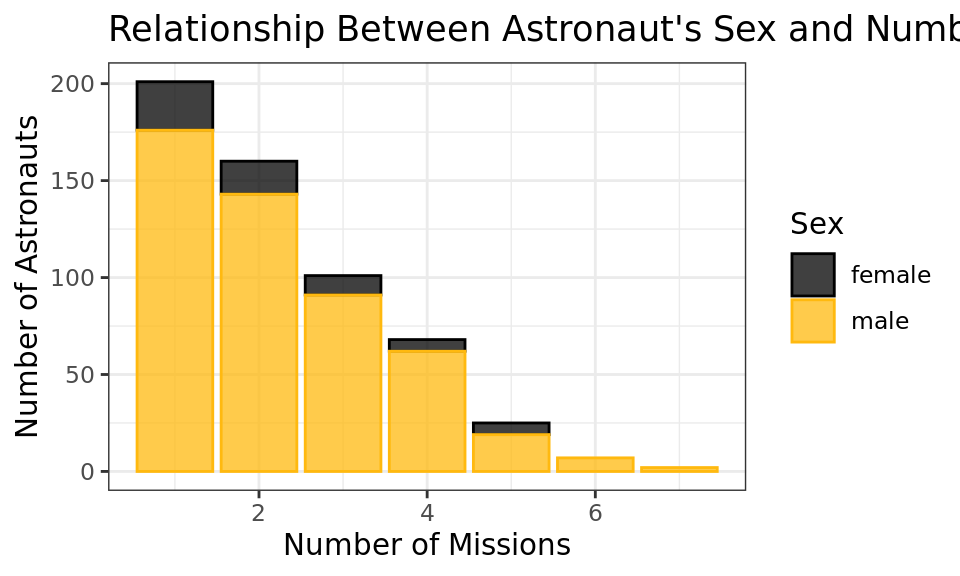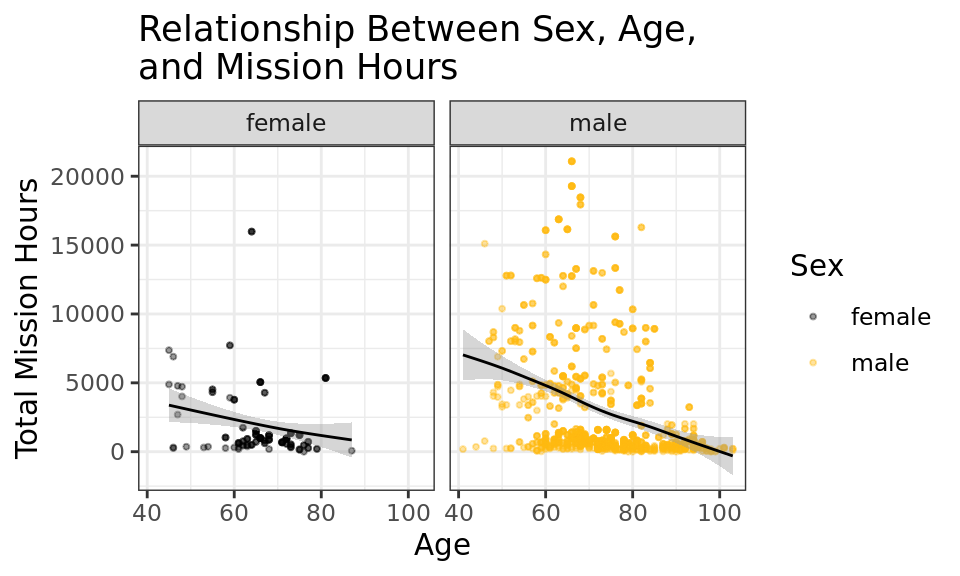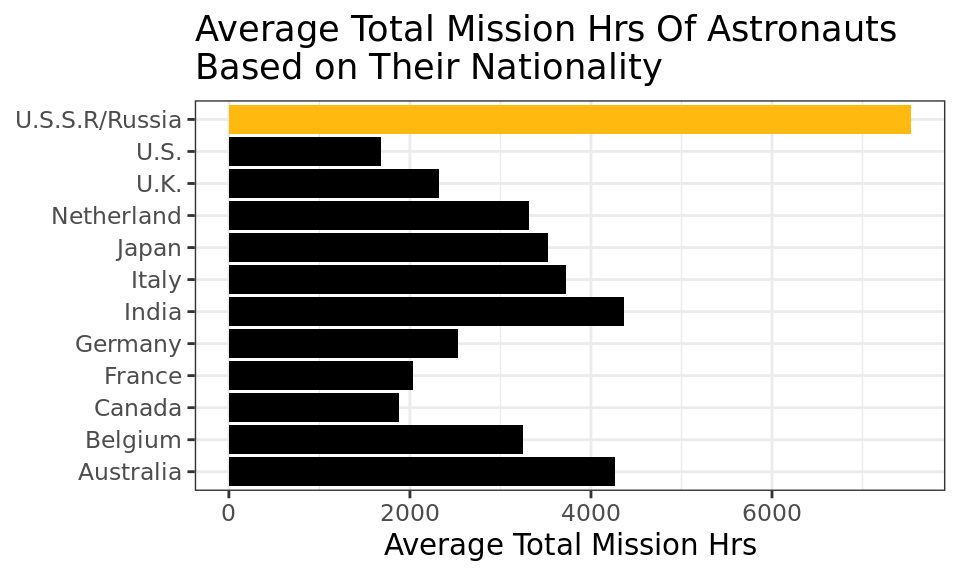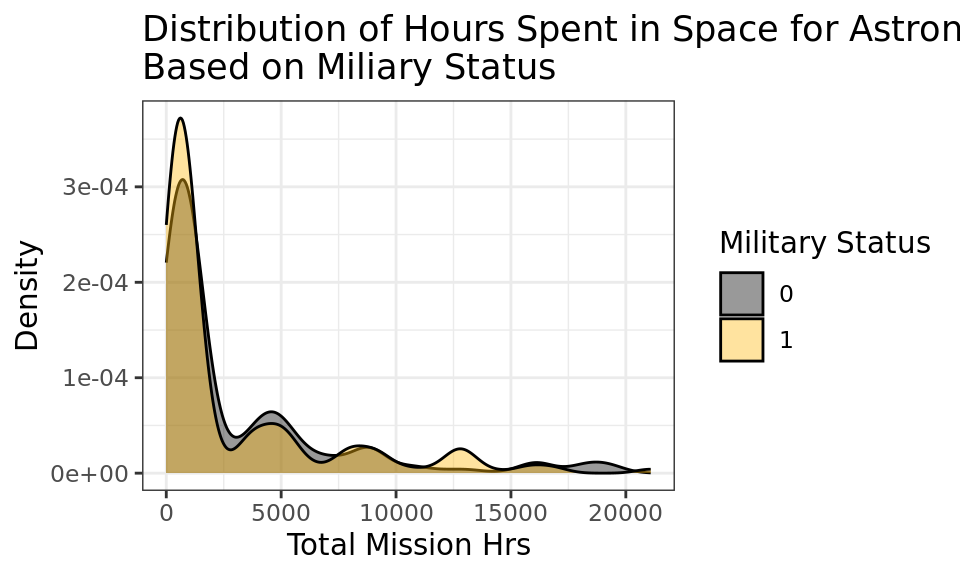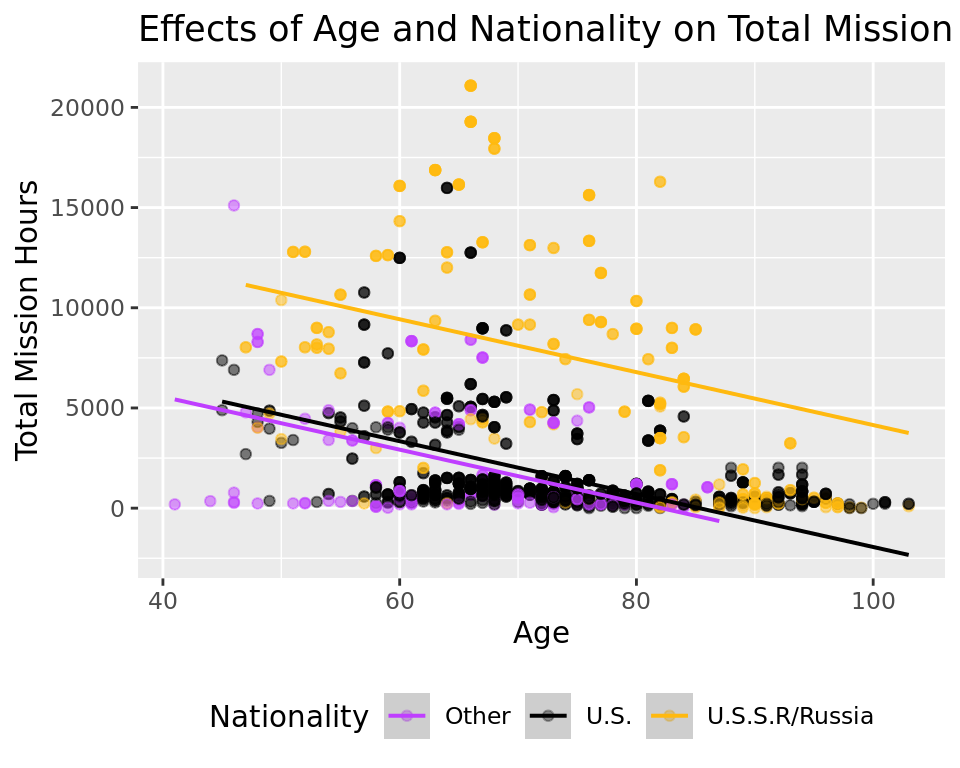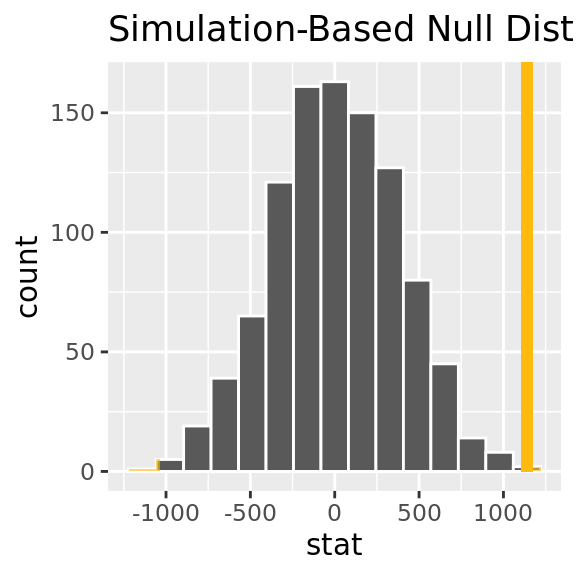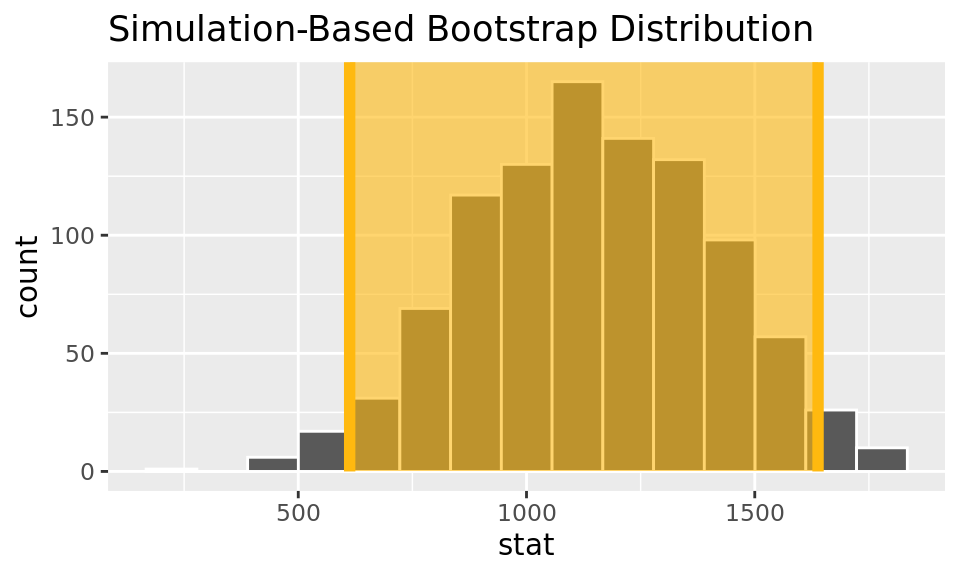Rows: 1,277
Columns: 24
$ id <dbl> 1, 2, 3, 4, 5, 6, 7, 8, 9, 10, 11, 12, 13, 14…
$ number <dbl> 1, 2, 3, 3, 4, 5, 5, 6, 6, 7, 7, 7, 8, 8, 9, …
$ nationwide_number <dbl> 1, 2, 1, 1, 2, 2, 2, 4, 4, 3, 3, 3, 4, 4, 5, …
$ name <chr> "Gagarin, Yuri", "Titov, Gherman", "Glenn, Jo…
$ original_name <chr> "ГАГАРИН Юрий Алексеевич", "ТИТОВ Герман Степ…
$ sex <chr> "male", "male", "male", "male", "male", "male…
$ year_of_birth <dbl> 1934, 1935, 1921, 1921, 1925, 1929, 1929, 193…
$ nationality <chr> "U.S.S.R/Russia", "U.S.S.R/Russia", "U.S.", "…
$ military_civilian <chr> "military", "military", "military", "military…
$ selection <chr> "TsPK-1", "TsPK-1", "NASA Astronaut Group 1",…
$ year_of_selection <dbl> 1960, 1960, 1959, 1959, 1959, 1960, 1960, 196…
$ mission_number <dbl> 1, 1, 1, 2, 1, 1, 2, 1, 2, 1, 2, 3, 1, 2, 1, …
$ total_number_of_missions <dbl> 1, 1, 2, 2, 1, 2, 2, 2, 2, 3, 3, 3, 2, 2, 3, …
$ occupation <chr> "pilot", "pilot", "pilot", "PSP", "Pilot", "p…
$ year_of_mission <dbl> 1961, 1961, 1962, 1998, 1962, 1962, 1970, 196…
$ mission_title <chr> "Vostok 1", "Vostok 2", "MA-6", "STS-95", "Me…
$ ascend_shuttle <chr> "Vostok 1", "Vostok 2", "MA-6", "STS-95", "Me…
$ in_orbit <chr> "Vostok 2", "Vostok 2", "MA-6", "STS-95", "Me…
$ descend_shuttle <chr> "Vostok 3", "Vostok 2", "MA-6", "STS-95", "Me…
$ hours_mission <dbl> 1.77, 25.00, 5.00, 213.00, 5.00, 94.00, 424.0…
$ total_hrs_sum <dbl> 1.77, 25.30, 218.00, 218.00, 5.00, 519.33, 51…
$ field21 <dbl> 0, 0, 0, 0, 0, 0, 0, 0, 0, 0, 0, 0, 0, 0, 0, …
$ eva_hrs_mission <dbl> 0.00, 0.00, 0.00, 0.00, 0.00, 0.00, 0.00, 0.0…
$ total_eva_hrs <dbl> 0.00, 0.00, 0.00, 0.00, 0.00, 0.00, 0.00, 0.0…
